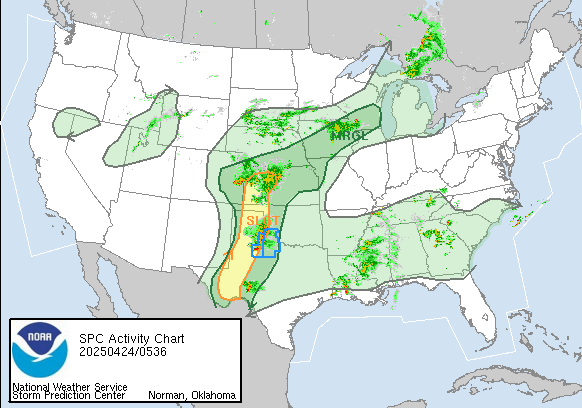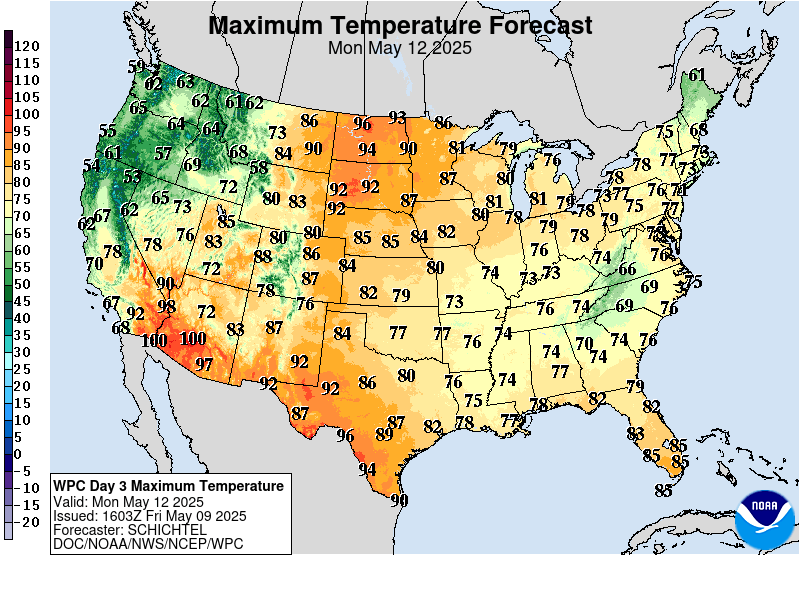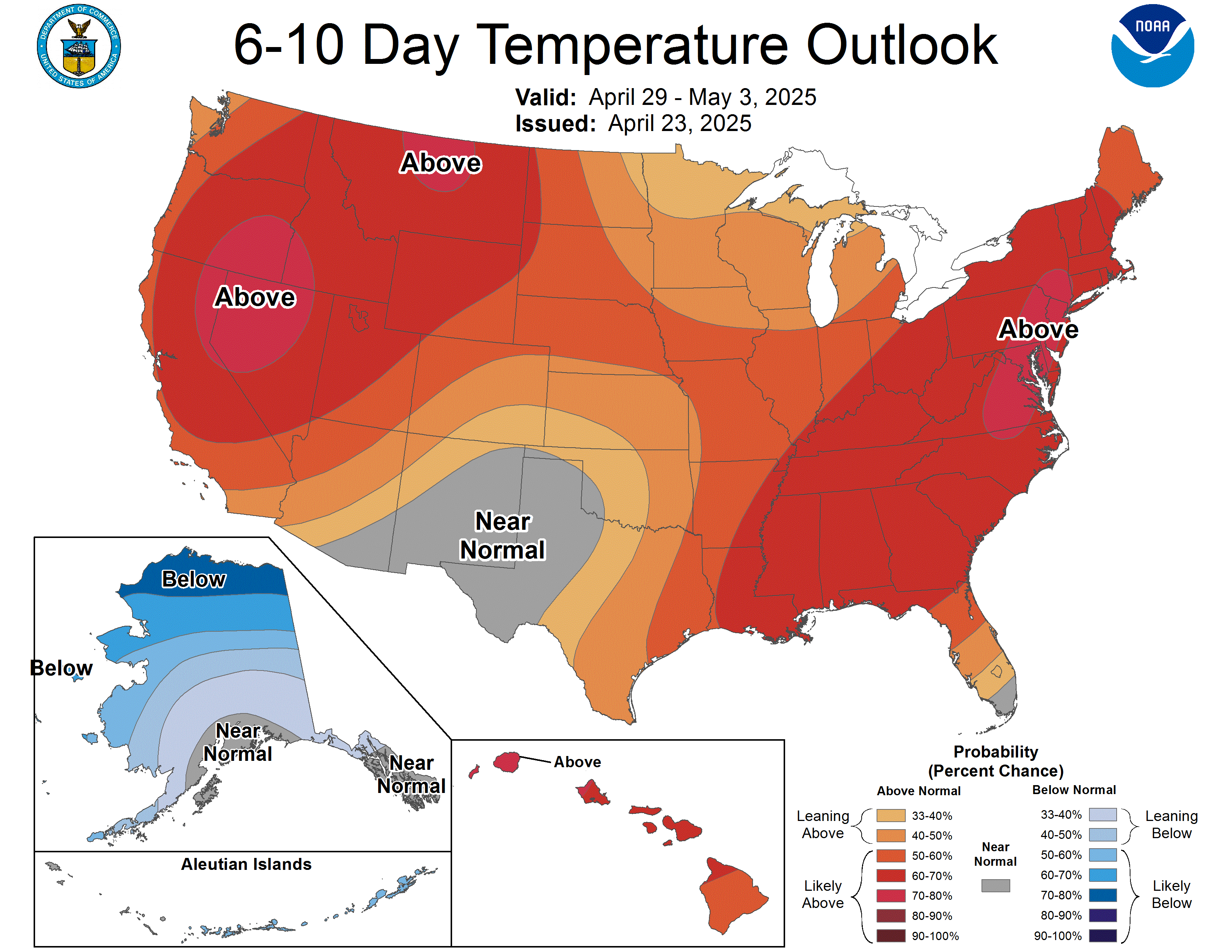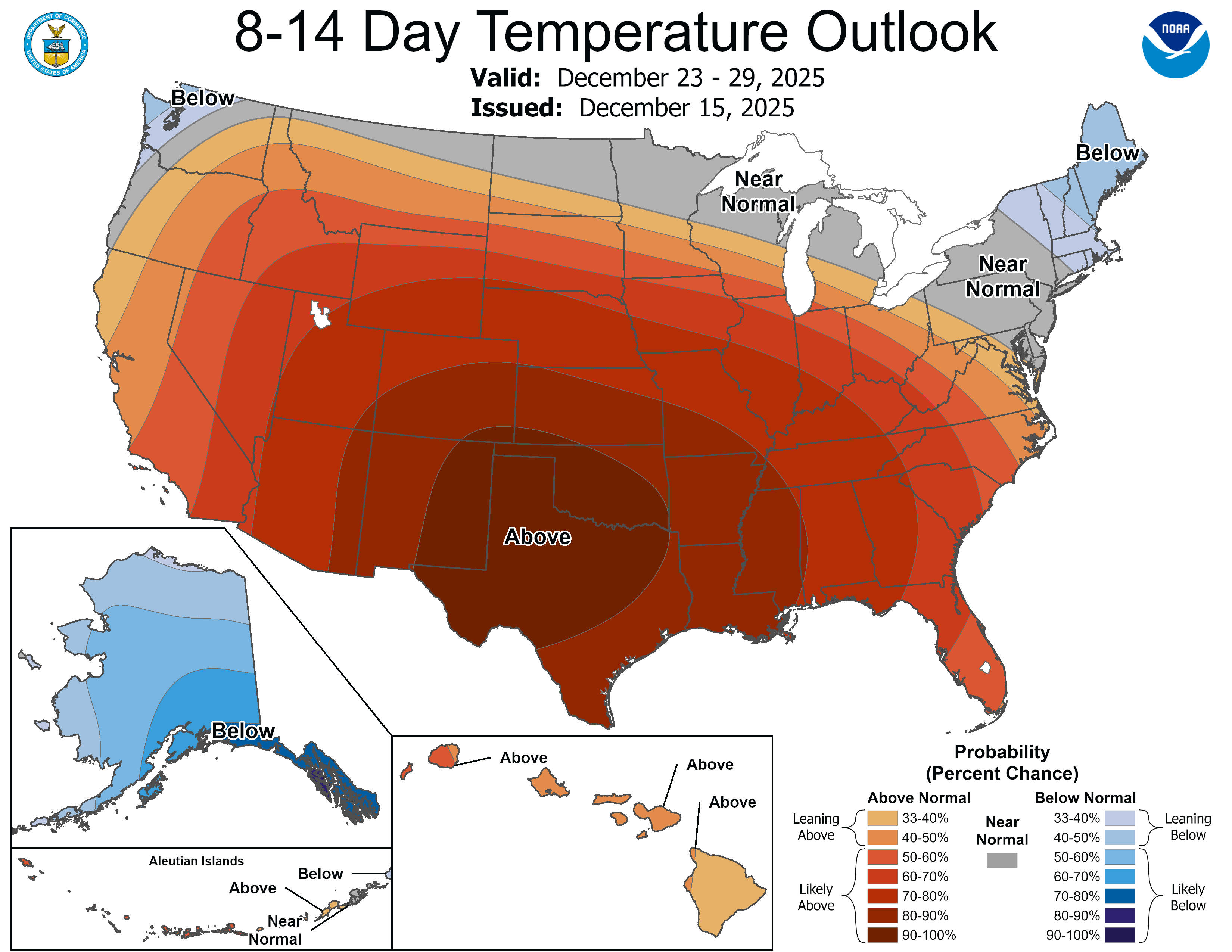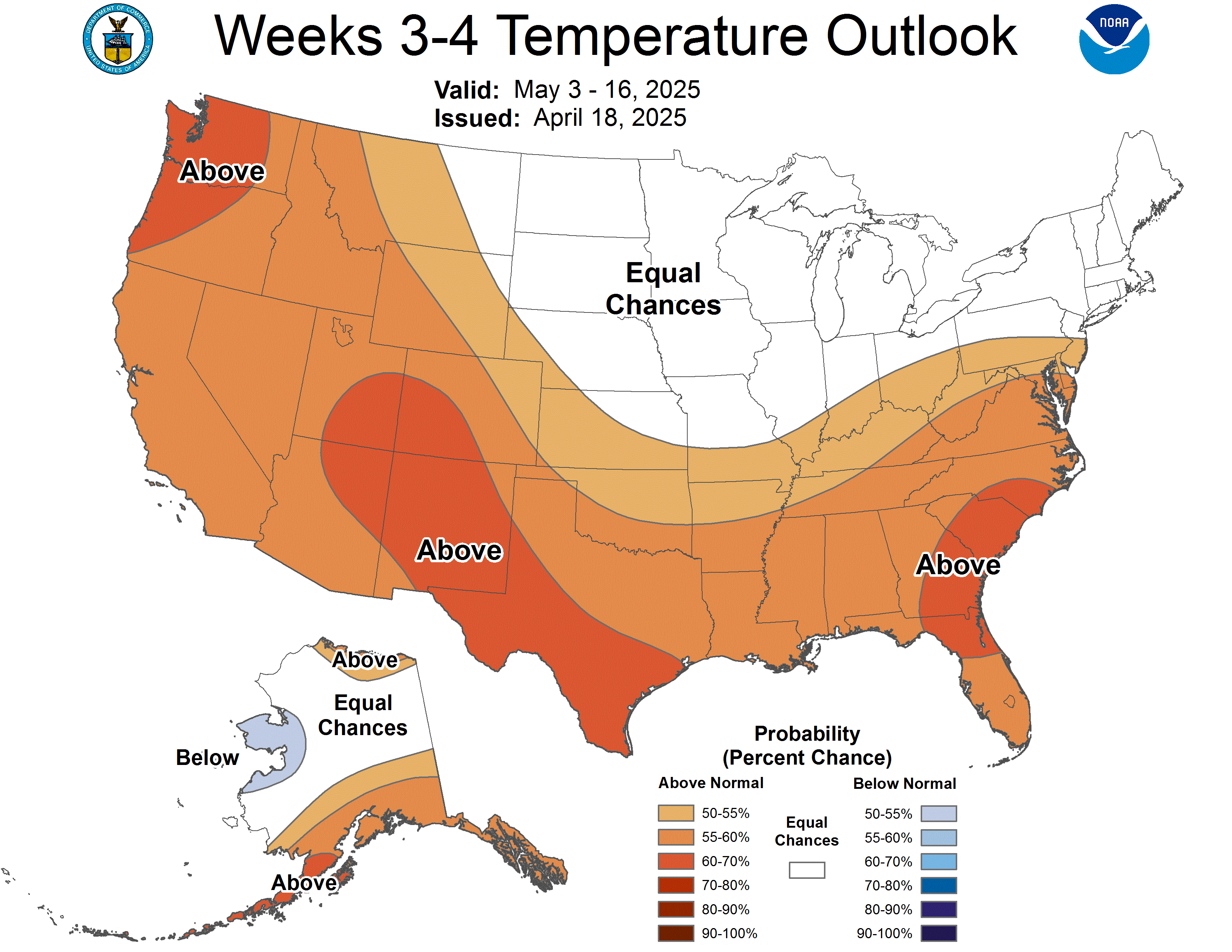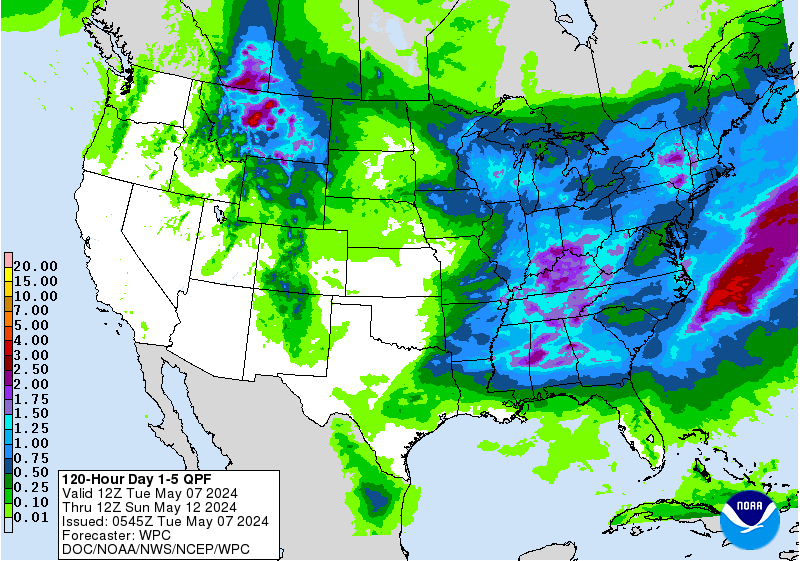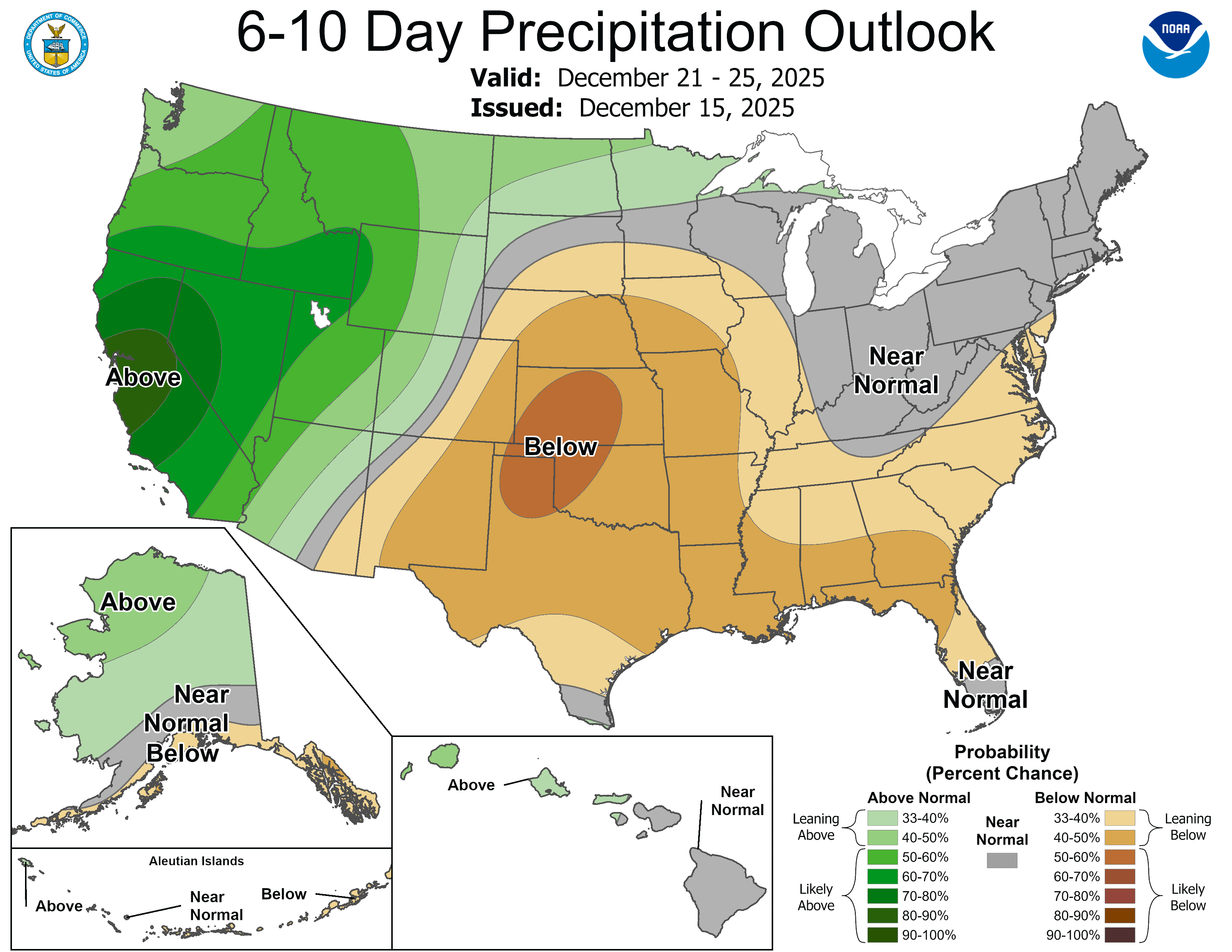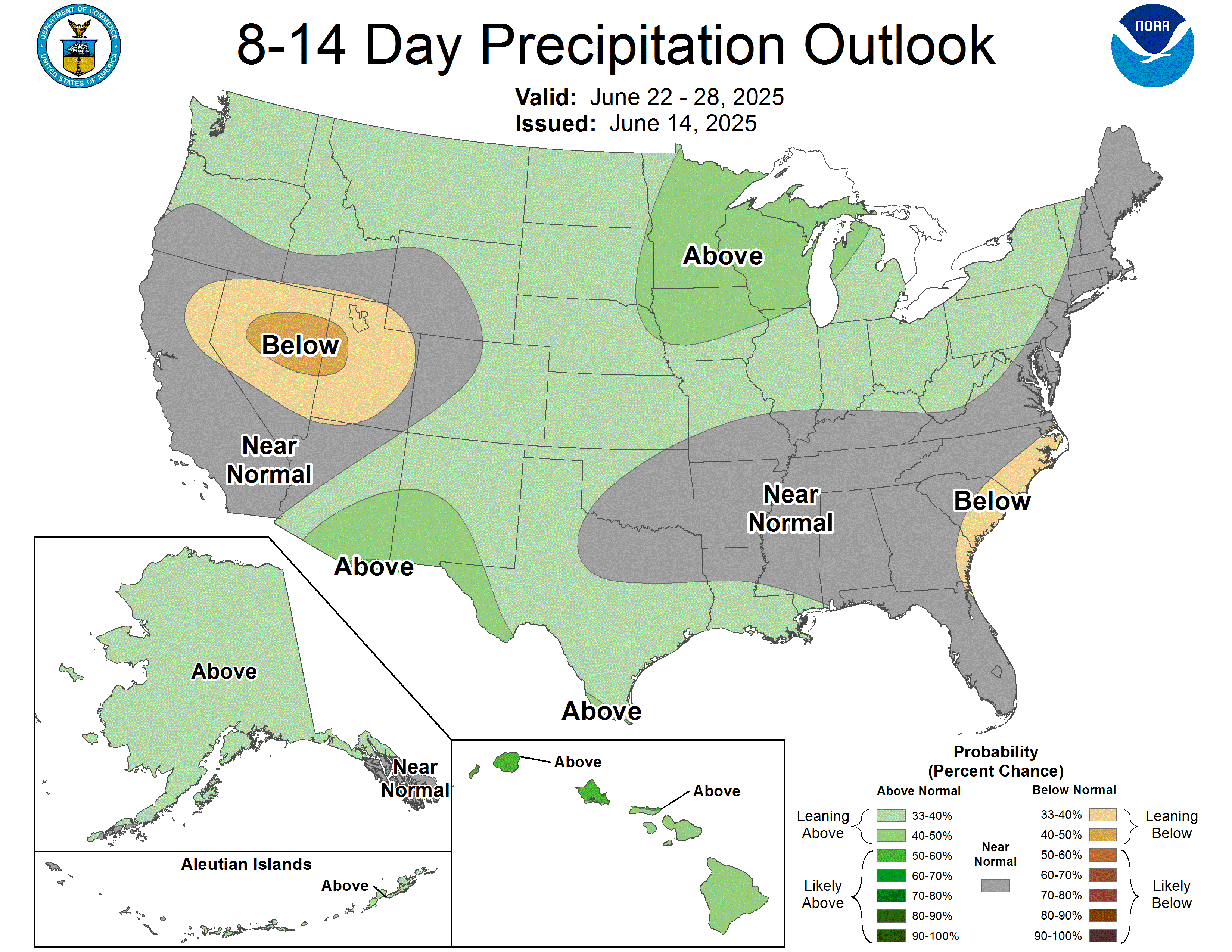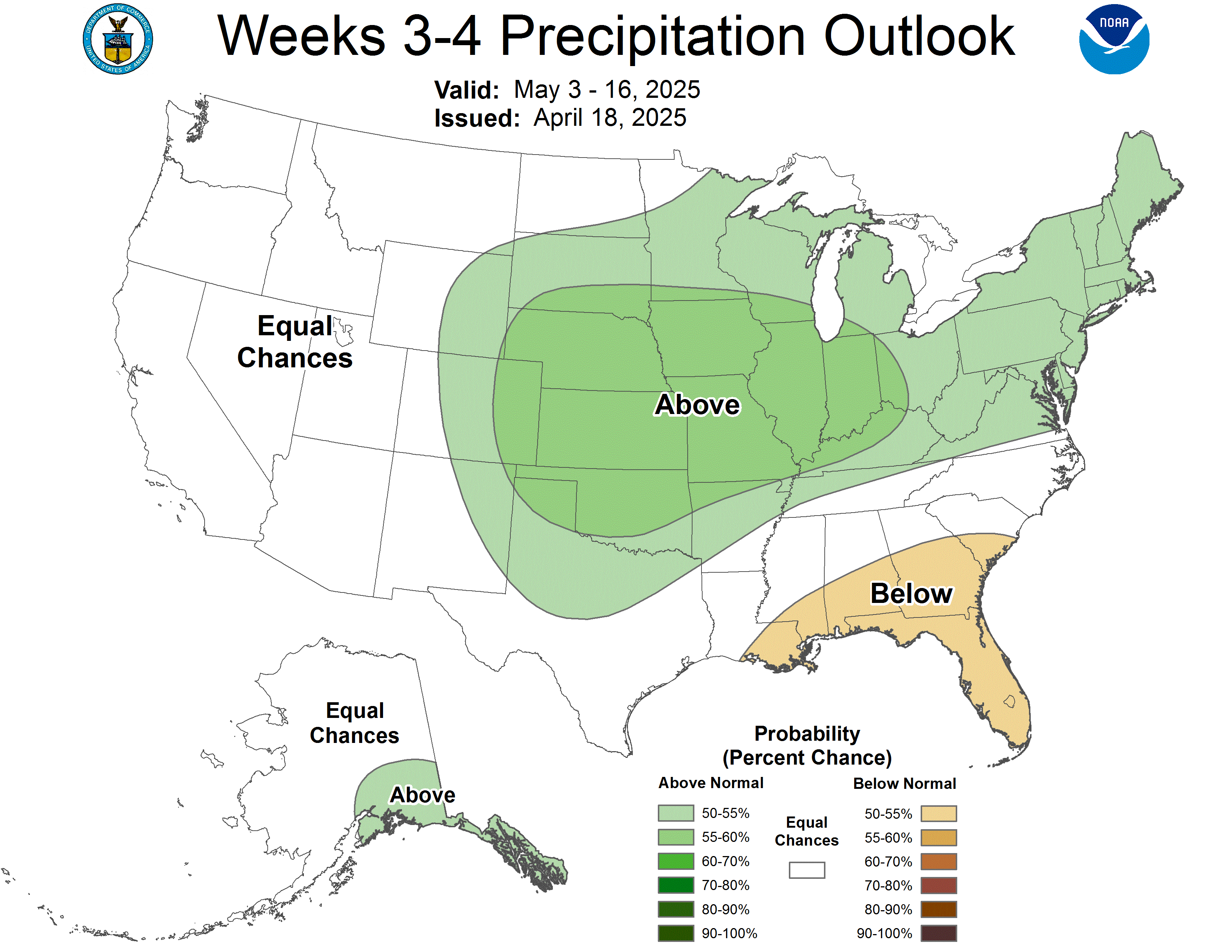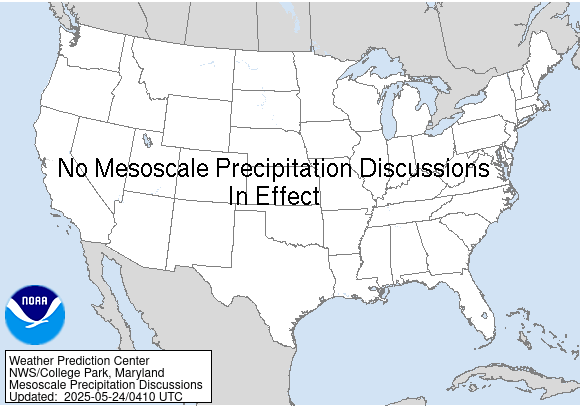Written by Sig Silber
HEADLINES (Updated 5:56 PM EDT) –
– Record-breaking cold to overspread areas from the Lower Mississippi Valley to Northeast through Friday
– Warm temperatures found across the western United States with critical fire weather located across the Northern Plains and parts of the Southern High Plains

This article provides continuous updates for a variety of Weather and Weather-Related Threats as well as a general weather forecast. These are “Live” maps that continually update. Please pay attention to the Mesoscale Events maps — Mesoscale Events are potentially life-threatening situations.
Please share this article – Go to the very top of the page, right-hand side for social media buttons. Also, feel free to send this email to anyone you feel will benefit from it.
For those interested in longer-term forecasts, we just published the new NOAA Seasonal Outlook and it can be accessed here.
Readers can scan through this article or jump to where they want to go via the links to the right. To get back to the Directory, hit the back arrow at the top of the URL bar on your screen. But in many cases, one of my Editors has graciously inserted a Return to Directory link to click so that is even easier. This is so high tech that I hardly believe it. |
|
CONUS Focal Points
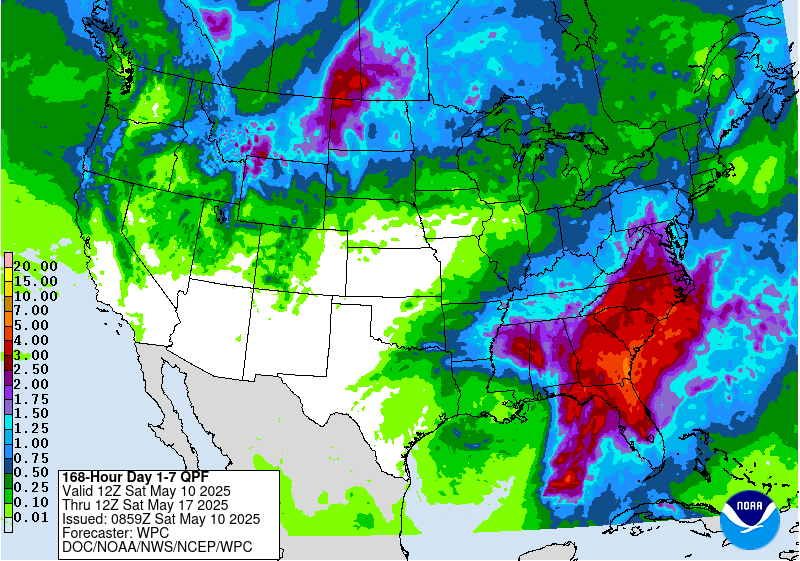
Short Range Focal Points
Short Range Forecast Discussion NWS Weather Prediction Center College Park MD 413 PM EDT Thu Apr 01 2021
Valid 00Z Fri Apr 02 2021 – 00Z Sun Apr 04 2021
…Record-breaking cold to overspread areas from the Lower Mississippi Valley to Northeast through Friday…
…Warm temperatures found across the western United States with critical fire weather located across the Northern Plains and parts of the Southern High Plains…
A deep low just off the Maine Coast will slowly move eastward into Southeastern Canada overnight Thursday. A tight pressure gradient around the low will help produce gusty winds over parts of the Northeast that will weaken overnight as the surface low fills. In the wake of the system, light snow will develop over parts of the Northeast into the Central Appalachians overnight Thursday, mostly ending by Friday morning. High pressure over the Upper Great Lakes into the Middle Mississippi Valley will slowly move eastward to the Southeast by Saturday evening.
The high will usher in much colder temperatures and gusty winds across the eastern United States. Even though colder temperatures are coming in, the combination of previous warm temperatures and rain could lead to rivers rising and ice jams occurring across northern Maine. Flood Watches are in effect to highlight the potential hazard. Furthermore, the colder temperatures associated with the high will produce record cold temperatures from the Central Gulf Coast to the Mid-Atlantic.
Additionally, record cold maximum temperatures may be in store for parts of the Southeast northward to the Northeast. Freeze Warnings and Watches, and Hard Freeze Warnings have been issued across the Middle Mississippi Valley, Tennessee, Lower Ohio Valleys, and Southeast and Mid-Atlantic parts. Low temperatures are forecast to dip to near freezing as far south as Central Georgia and Southern South Carolina. Temperatures this cold during the beginning of April can cause damage to early-season crops and plants. Gusty winds along the East Coast will make it feel even colder at times.
Across the western U.S., much warmer and tranquil weather is expected through Saturday. High temperatures are forecast to run well above average and virtually no precipitation is expected. However, the combination of warm weather, low relative humidity, and gusty winds will create conditions ripe for wildfires to possibly spread uncontrollably across the Northern Plains and Southern High Plains. The Storm Prediction Center has issued a Critical Risk of fire weather that extends from northern Montana to far northwest Minnesota, with a small area issued across the greater western Oklahoma Panhandle region. Also, Red Flag Warnings have been issued across the Northern Plains, as well as southeast Arizona.
We try to keep this up to date but if is not you can find the updated version here.
When you click on this image it takes you to the SPC Fire Warning Page and you get a set of maps for Days 1, 2, 3 – 8, etc. You can then click on those for more detailed information. The map is a bit blurry as I tried to make it a bit larger than the map provided by NOAA but should be able to see where the current wildfire risks are. But if you click on this map, you will get to see three maps that show the risk for different time periods.
Thunderstorm Risk
This should play out something like shown in this 60 Hour Forecast Animation
Here is a national animation of weather fronts and precipitation forecasts with four 6-hour projections of the conditions that will apply covering the next 24 hours and a second day of two 12-hour projections the second of which is the forecast for 48 hours out and to the extent it applies for 12 hours, this animation is intended to provide coverage out to 60 hours. Beyond 60 hours, additional maps are available at links provided below. The explanation for the coding used in these maps, i.e. the full legend, can be found here although it includes some symbols that are no longer shown in the graphic because they are implemented by color-coding.
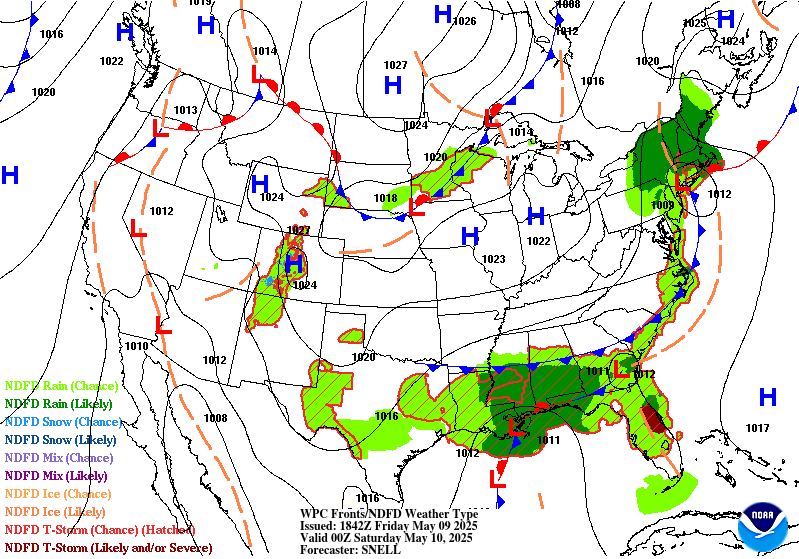
The two maps below break it down by day and may be easier to read.
Now, the Day One and Two CONUS Forecasts: These Maps Update Daily.
Day One CONUS Forecast | Day Two CONUS Forecast |
These graphics update and can be clicked on to enlarge. You can see where the weather will be | |
 | |
During the winter much of our weather originates in the Pacific. That is why we pay attention to the near-term history of storms arriving.
Temperature
A version that shows a 40 hour animation and some other views can be found here

– Return to Directory
Day 3 – 7 Hazards
Valid Sunday April 04 2021 – Thursday April 08 2021
Hazards:
– Flooding possible across portions of the Southeast and the Tennessee Valley.
– Flooding occurring or imminent across portions of the Middle/Lower Mississippi Valley, the Ohio Valley, and the Tennessee Valley.
– Much above normal temperatures across portions of California and the Southwest, Sun-Mon, Apr 4-Apr 5.
– Heavy rain across portions of the Central/Southern Appalachians, the Ohio Valley, and the Tennessee Valley, Thu, Apr 8.
– Heavy snow across portions of mainland Alaska, Sun, Apr 4.
– Much below normal temperatures across portions of mainland Alaska, Tue-Thu, Apr 6-Apr 8.
Detailed Summary:
During the medium range period (Sunday, April 4th – Thursday, April 8th), persistent ridging aloft at the start of the week will keep the weather relatively quiet precipitation-wise while simultaneously opening the door for temperatures to soar well above normal for a significant portion of the CONUS. From the Desert Southwest to the Upper Midwest temperature departures ranging from 15 to 25 degrees above average are expected Sunday and Monday, potentially breaking numerous daily high temperature records throughout the affected regions. Though the greatest temperature anomalies are forecast for the Central and Northern Great Plains they are not anticipated to be hazardous, as highs will only reach into the 70s and 80s. Conversely, in the Desert Southwest highs are expected to reach the mid to high 90s and may hit triple digits in some areas. According to NWS Phoenix, if Phoenix were to hit 100 degrees on either Sunday or Monday, it would be “the third earliest arrival time for the triple digits.” Residents of southwestern Arizona and southeastern California should exercise caution when outside to prevent dehydration and heat stroke. High temperatures will begin to moderate over the southwest and north-central CONUS on Tuesday as the upper-level ridge progresses eastward, giving the South and East their own taste of warm weather for a few days, and cold fronts pass through the Plains and the Southwest.
With the arrival of an upper-level trough over the Pacific Northwest comes the return of wet weather over the lower 48 after a short reprieve. To the south and east of this trough multiple low pressure/frontal systems are expected to pass through the West and Northern Tier, bringing with them a mix of light to moderate rain and high elevation snow through Wednesday. Though current model guidance suggests the rain could be heavy at times, their deterministic and ensemble solutions are in stark disagreement with regards to the timing and location of the heaviest rainfall due to differing evolutions of the upper-level trough. This high degree of uncertainty precludes the inclusion of a heavy rain area at this time. Despite the disparity in the models through Wednesday, it does appear some degree of consensus is reached come Thursday. Though the deterministic solutions are somewhat spread, the ensembles appear to cluster around a heavy rain signal in the Ohio and Tennessee Valleys. As such, a heavy rain area has been drawn for that region for Thursday and will be adjusted in the coming days as predictability increases and the guidance comes into focus. Elsewhere on Thursday, a cold front moving onshore into the Pacific Northwest will likely bring moderate coastal rain and high elevation snow to the region.
In Alaska, a cold front is expected to pass through the mainland on Sunday bringing heavy snow to portions of the Southwest. Throughout the rest of the period high pressure at the surface is forecast to build to the north and west of the state, driving cold, arctic air into the Interior and portions of the Far North, causing temperatures to plummet 20 to 30 degrees below normal. With lows sitting at or well below zero, residents are urged to take caution when outside, keeping skin covered to prevent frostbite and dressing warm to stave off hypothermia.
(This is updated only during the week) Note the first list is weather highlights, this list is hazards. Not sure there is that much of a difference but they come from two different parts of NOAA. The Day 3 – 7 Hazards List does not update on weekends. But it is still useful as it remains valid for the period of time it covers. Of course, all forecasts are subject to change. Later we show a map of the hazards. Perhaps we should show them together.
Click here for the latest complete Day 3 -7 Hazards forecast which updates only on weekdays. It includes the full discussion which I do not update in this article but only present the highlights.
– Return to Directory
Ski Snow Reports
New Feature – Ski Reports. (We may be a tad premature but not by much). It is difficult to find reports that auto-update on-screen (and they are very long) but these links will get you to them – If you have additional suggestions make them in the comments section after every GEI Article and we may add those links. We will try to not have too much overlap as that can add to the confusion.

We will update the above map (or maps) weekly (or more often when the situation is changing rapidly) but more frequent updates can be obtained here.
Snow Forecasts.
Day 1
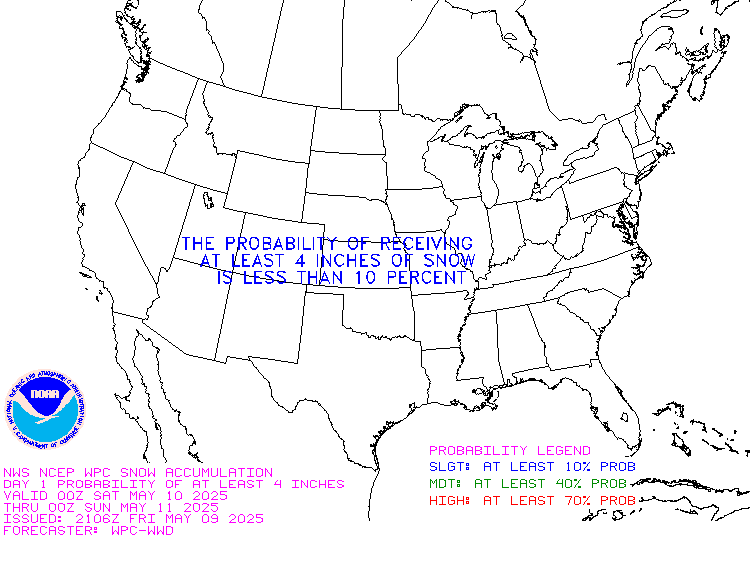
Day 2
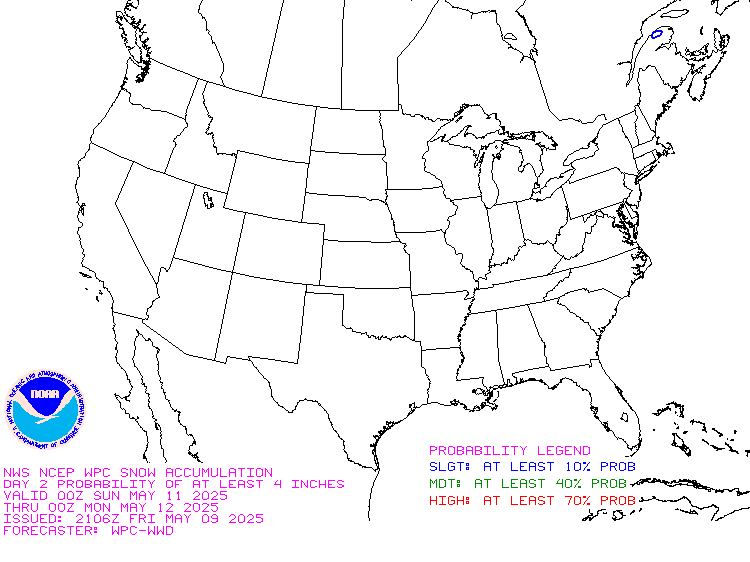
Additional snow information can be found here and here.
We also include drought information in this section.


More information can be found here.
March Drought Outlook..
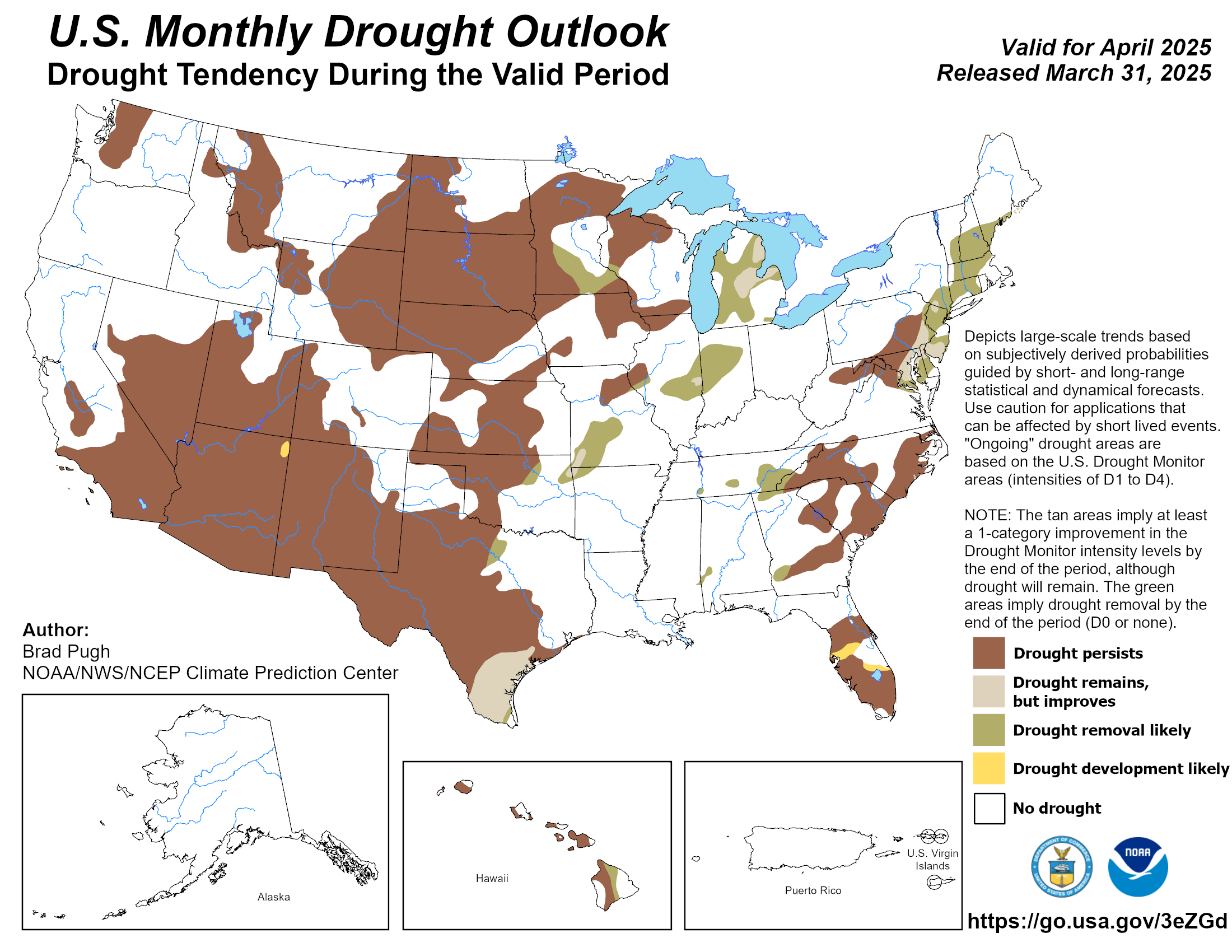
Seasonal Outlook Issued February 18, 2021
– Return to Directory
Tropical Events
I am replacing the large with three small maps but you can click on them to get larger versions. Even though they are small maps you should be able to tell if there is activity and If I see activity I will make the map where there is activity full size and when available add other related maps. Sorry for any confusion but the NHC maps do not update during the Winter except if there is activity. We leave them in simply because if there is a storm NOAA will start to update the relevant map even though it is not normally updated during the off season. The maps are a bit small but if you click the map you can see the date and time when it was updated.
| the Central Pacific. | the Eastern Pacific | the Atlantic and the Gulf of Mexico |
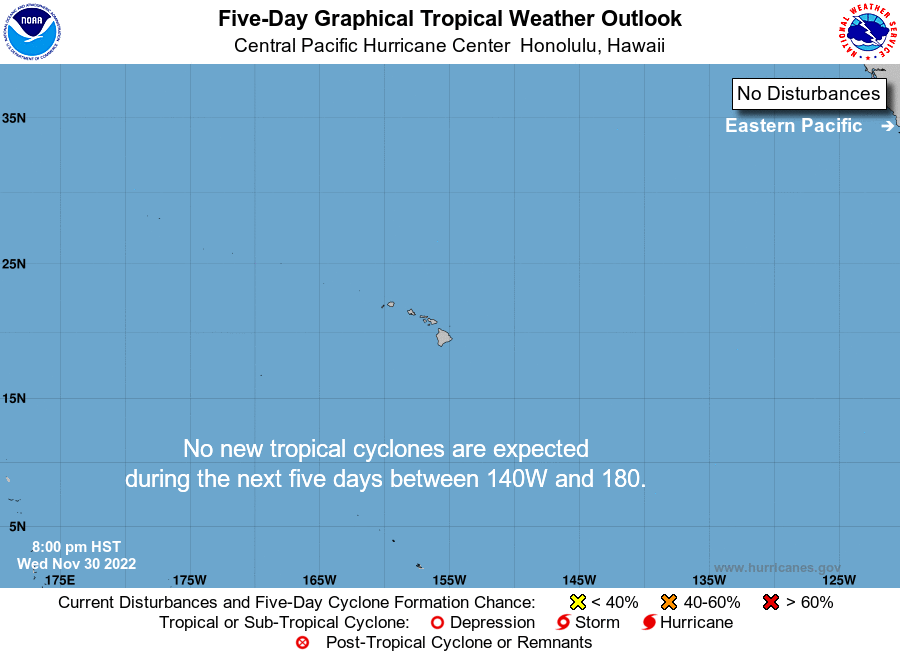 | 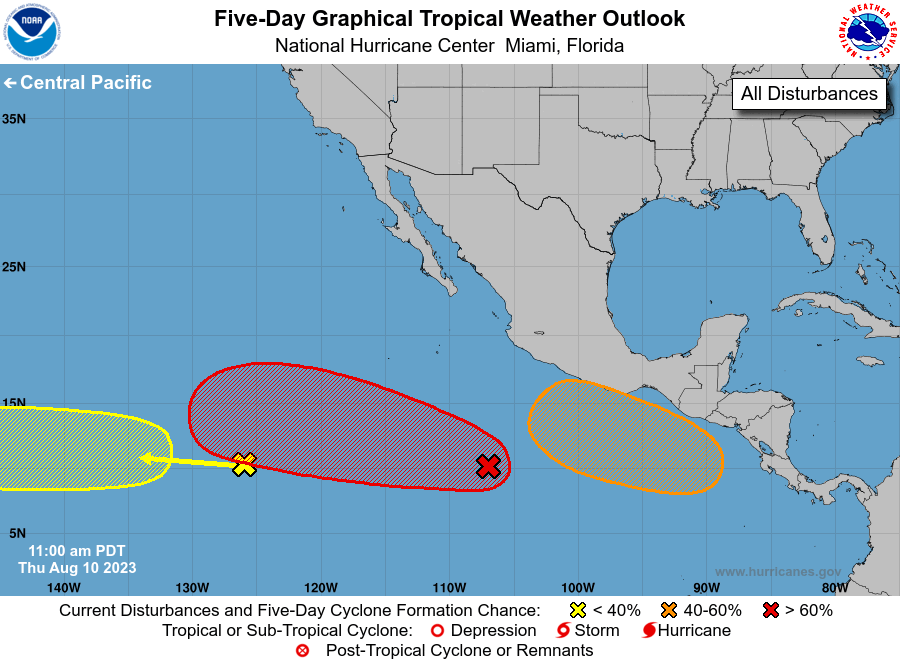 | 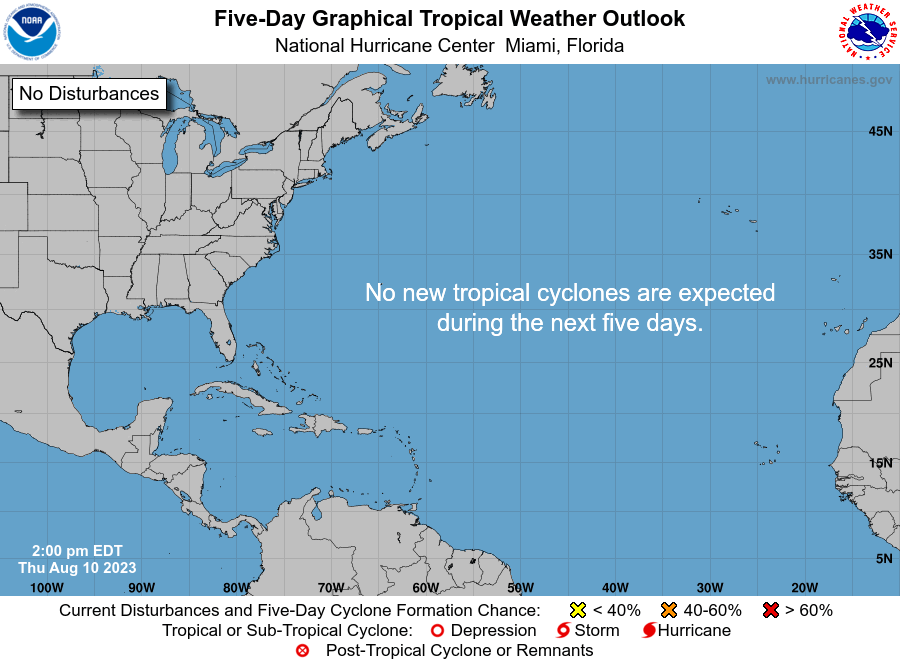 |
Atlantic and Gulf of Mexico
The Central Pacific
Updates on individual named storms can be obtained here.
And the Western Pacific
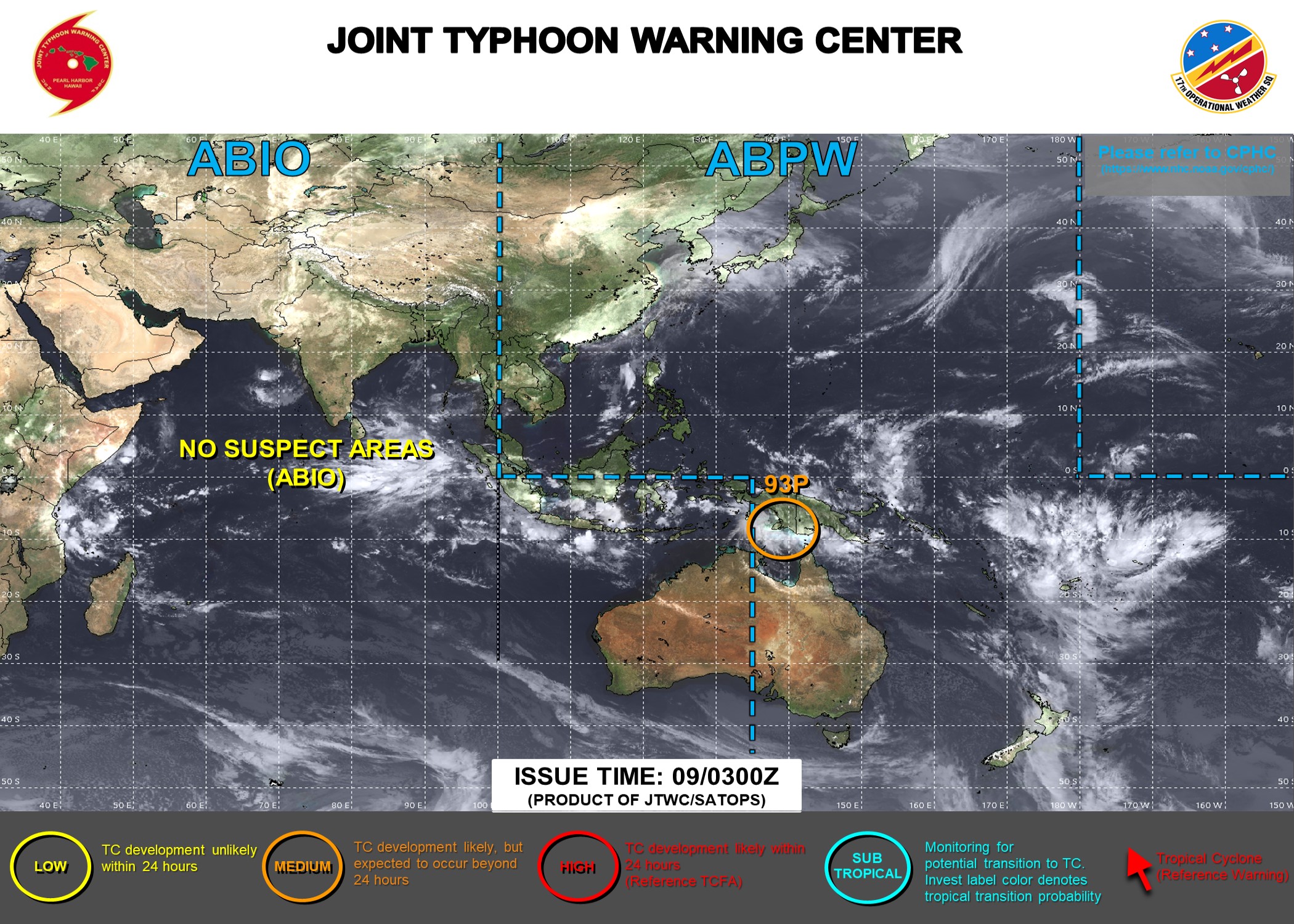
Weekly Tropical Forecast
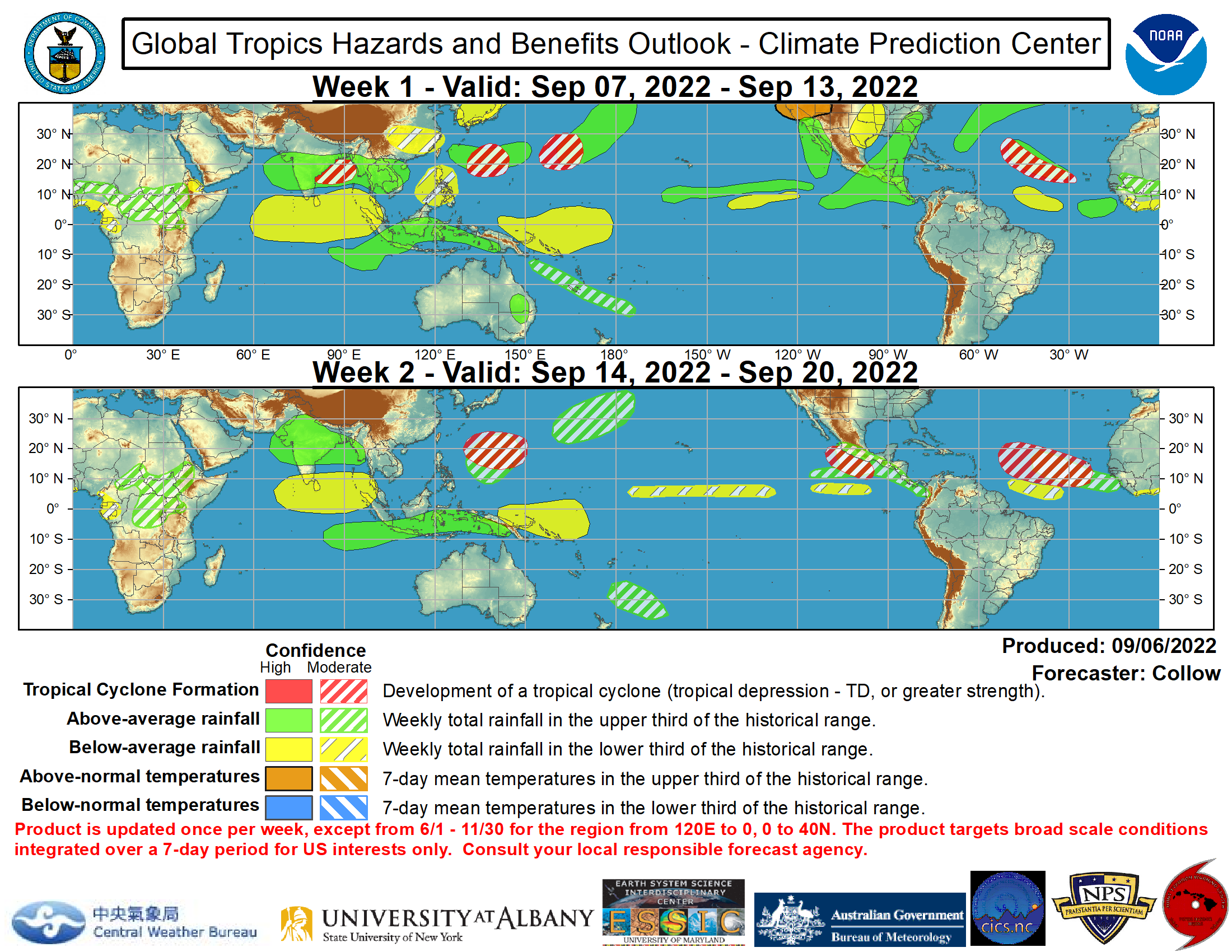
– Return to Directory
Intermediate-Term Weather Forecast
And shifting to the Alaska and CONUS Intermediate-Term Weather Forecast showing from left to right, Days 1- 5, 6 – 10, 8 – 14 and Weeks 3 – 4 You can click on these maps to have them enlarge, there are larger versions in the Addendum (More Weather the link is shown at the end of this section, and there are larger versions of these maps in the Addendum. Also, the discussions that go with these forecast maps can be found here (first two weeks) and here (Weeks 3 and 4).
First Temperature
And then Precipitation
For those interested in more detail, there are additional weather maps and information in the MORE WEATHER Addendum. The link to the Addendum is here. |
– Return to Directory
Mesoscale Events
The following map shows where mesoscale events are occurring or forecast. If you do not see any areas highlight on this map than there are no mesoscale events taking place or forecast. A mesoscale event is a very serious situation for a very small area and detailed information is provided for these events when they occur or are forecast. If a mesoscale event is shown, click on the map and more detail on the event will be shown.
Two different parts of the NWS issue this map and they are not always in agreement although they are pretty close. They (Norman Oklahoma and College Park Maryland) issue the alerts when they realize the need, so it is best to look on both maps and click one or both if you see areas highlighted.
This next map showing where “Headlines” have been issued for convection (and an animation of the recent movement of storms) should update and you should be able to click on to get additional details but if it does not update when you click on it, click here.
There is a slight difference between convection and thunderstorms. The below map shows where “Headlines” have been issued for Thunderstorms. You should be able to click on the map to get additional details but if it does not update, you can click here.
The map below shows the current wildfire risk which becomes more significant as we move into Summer. When you click on this image it takes you to the SPC Fire Warning Page and you get a set of maps for Days 1, 2, 3 – 8, etc. You can then click on those for more detailed information. The map is a bit blurry as I tried to make it a bit larger than the map provided by NOAA but should be able to see where the current wildfire risks are. But if you click on this map, you will get to see three maps that show the risk for different time periods.
– Return to Directory
Now the Day 3 – 7 Hazards Outlook Maps

The orange and red outlined areas are what is most concerning of the forecasted Day 3 – 7 Hazards. This graphic does not update during the weekend. There is a discussion that goes with this graphic and you can access that discussion here.
The following is provided to help the reader relate the maps to how NWS will describe an area of the U.S.
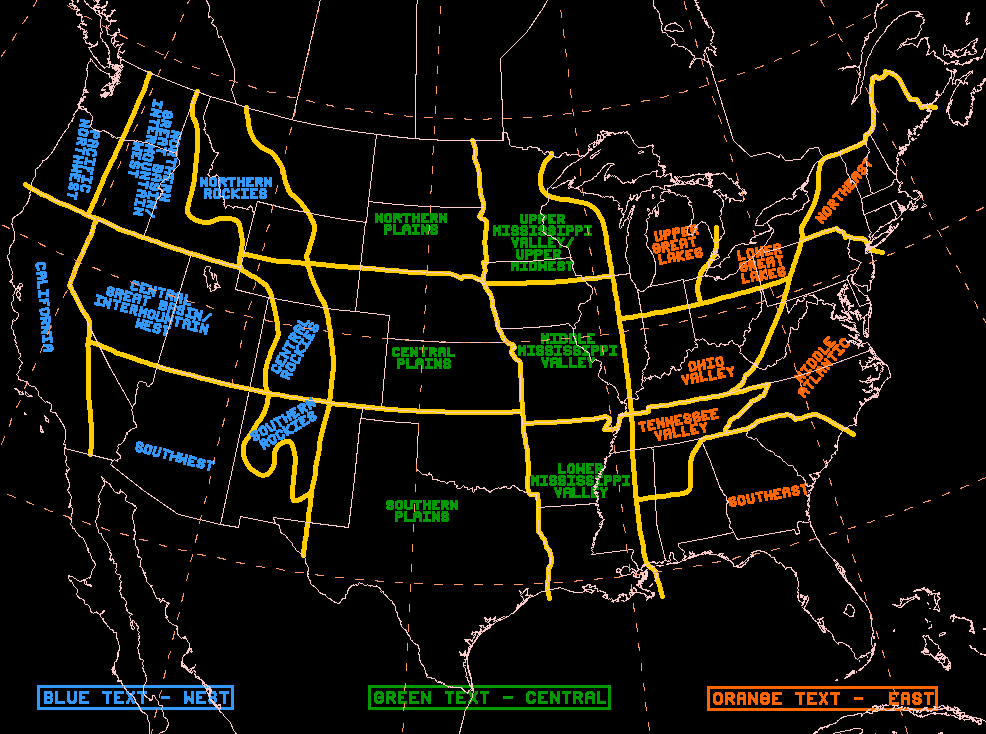
– Return to Directory
Now to our More Detailed Weather Report
This graphic is about Atmospheric Rivers i.e. thick concentrated movements of water moisture. More explanation on Atmospheric Rivers can be found by clicking here or if you want more theoretical information by clicking here. The idea is that we have now concluded that moisture often moves via narrow but deep channels in the atmosphere (especially when the source of the moisture is over water) rather than being very spread out. This raises the potential for extreme precipitation events.
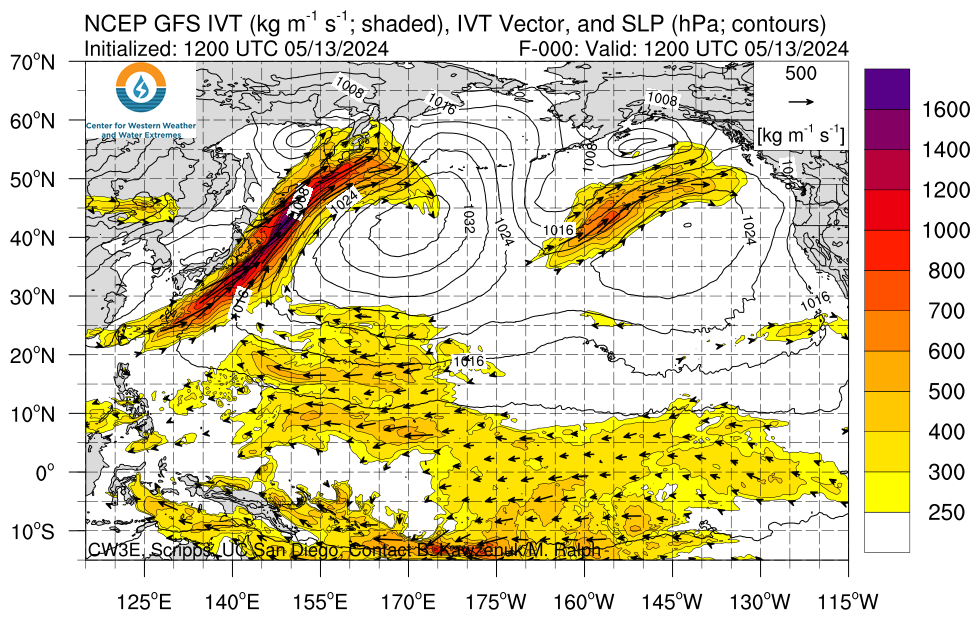
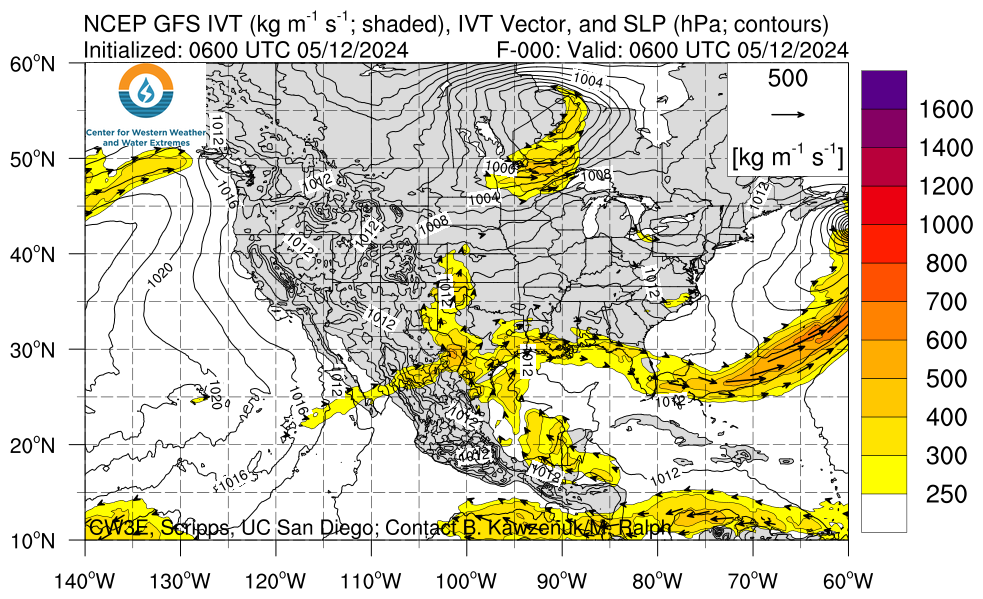
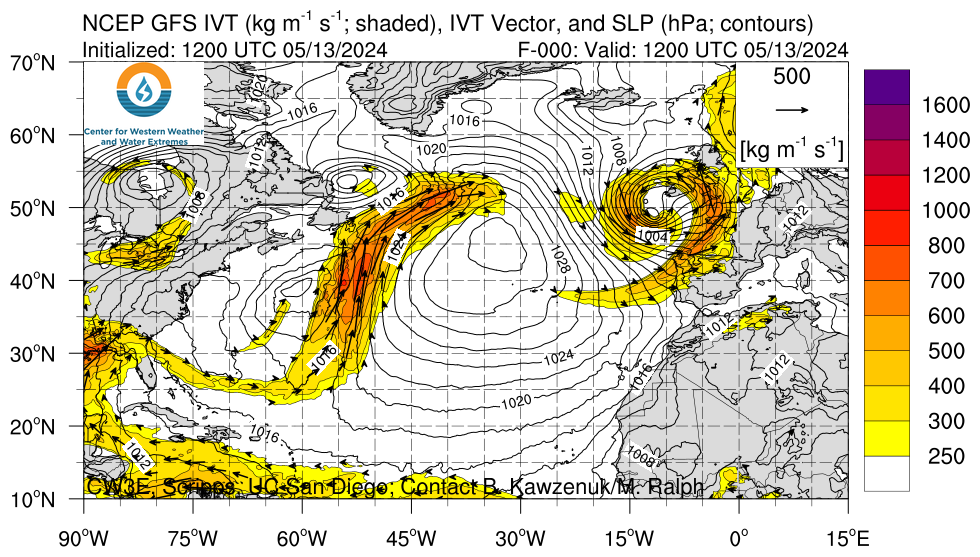
500 MB Mid-Atmosphere View
The map below is the mid-atmosphere 3-Day chart rather than the surface highs and lows and weather features. In some cases, it provides a clearer less confusing picture as it shows only the major pressure gradients. This graphic auto-updates so when you look at it you will see NOAA’s latest thinking. The speed at which these troughs and ridges travel across the nation will determine the timing of weather impacts. This graphic auto-updates I think every six hours and it changes a lot. Thinking about clockwise movements around High-Pressure Systems and counterclockwise movements around Low-Pressure Systems provides a lot of information.
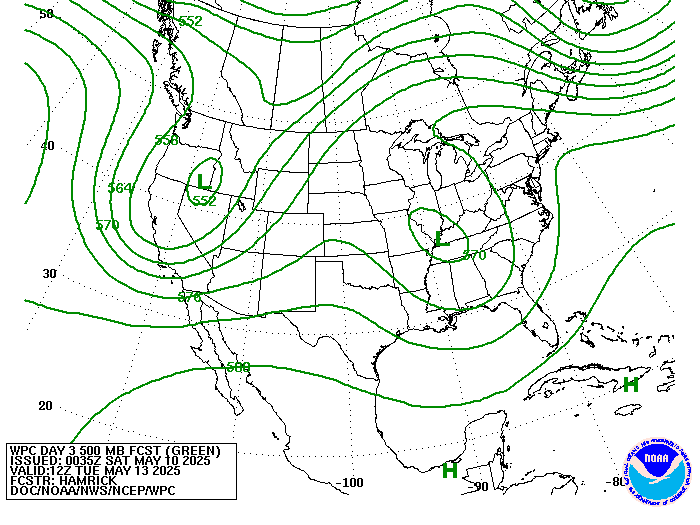
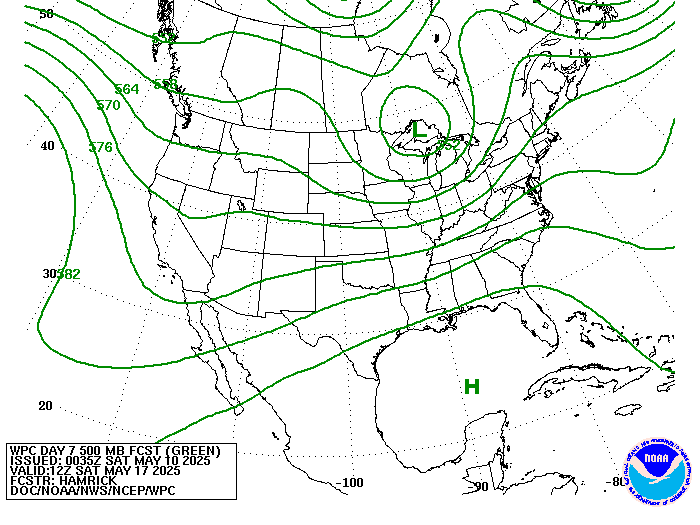
| Day 3 Above, 6 Below | Day 4 Above,7 Below | Day 5 Above. |
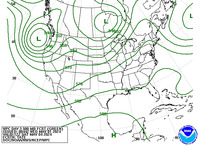 | 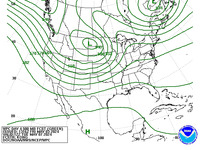 | 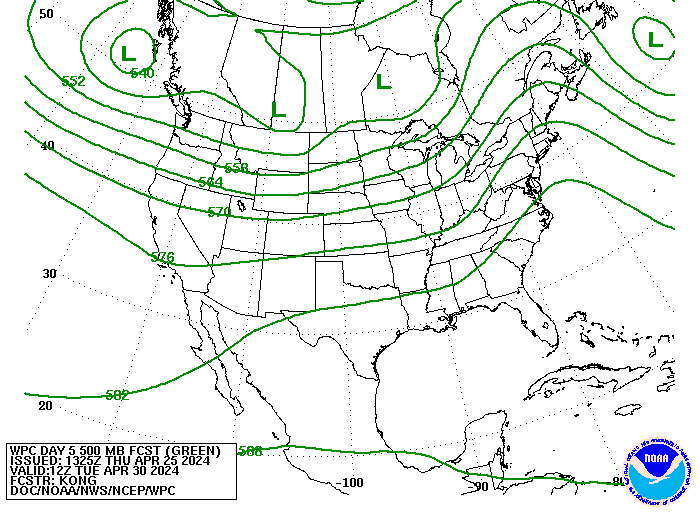 |
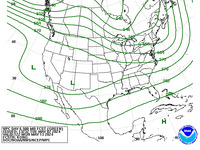 | 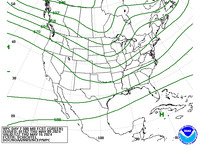 | 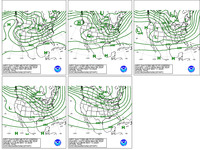 |
Here are the precipitation forecasts. First the cumulative for Days 1 – 3
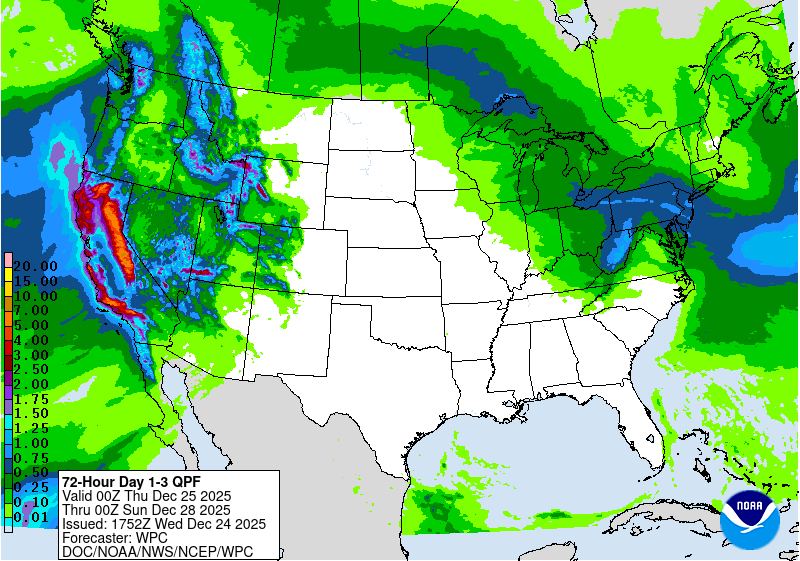
Then cumulative for Days 1 – 5
Then cumulative for Days 1 – 7

Now we look at the forecast for the Maximum Temperature three days out.
Looking ahead to next week.

– Return to Directory
Additional Tools to Obtain Watches and Warnings
| Current watches, warnings, and advisories issued by the agencies of the National Weather Service. Hazards should show up in the various maps but the below links will take you to all outstanding watches and warnings in each category which may include some categories not covered in the various maps or difficult to find. So if there is a category of interest, click on the appropriate link below. |
|
Below you will see a number of different maps that are updated in real-time, making this a “live” report. If a part of one or more of the maps shows an area that is highlighted, you can click on it and get the full current report. By having the reader click on these active situations rather than having GEI do so, you will not miss any events in which you might have an interest and which we had not noticed and the page will not get cluttered with warnings, etc that have since expired.
Our focus here is events that are likely to last in the range of six hours but there can be longer or shorter events that are addressed by the Storm Prediction Center which is the main source of the information in this article. Long-term major events like a Hurricane are more likely to be in a separate article. But that may not always be the case. Since in general, all the links on this page transfer you into the NOAA system, in order to get back into this article you need to either close the tab to which you were transferred or click back on the tab that has this article.
| Live Warning Maps which If Severe Weather is Shown can be Clicked on to get more detail about these events. If there is a current warning shown on the map, click on the map for additional information related to the event. | These maps are updated as risks are identified. |
| This is the current graphic showing any mesoscale discussions (MD’s) which are in effect over the contiguous United States. Please read the description of the purpose of our MD’s for further information. Details on all valid MD’s may be found on our Current Mesoscale Discussions page. | 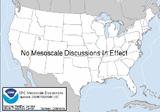 |
| Convective Outlooks | |
|---|---|
| This is today’s forecast for organized severe thunderstorms over the contiguous United States. Please read the description of the risk categories for further information. You may find the latest Day 1 Outlook available as well as all Outlooks issued today online. | Today’s Outlook |
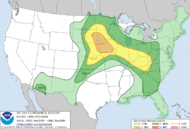 | |
| This is tomorrow’s forecast for organized severe thunderstorms over the contiguous United States. Please read the description of the risk categories for further information. The latest Day 2 Outlook is available as well as all Outlooks that have been issued today. | Tomorrow’s Outlook |
 | |
| This is the day after tomorrow’s (day 3) forecast for organized severe thunderstorms over the contiguous United States. Please read the description of the risk categories for further information. The latest Day 3 Outlook is available as well as all Outlooks that have been issued today. | Day 3 Outlook |
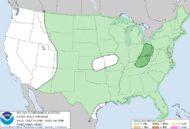 | |
| This is the day 4-8 forecast for organized severe thunderstorms over the contiguous United States. The latest Day 4-8 Outlook is available as well as all Outlooks that have been issued today. Note: A severe weather area depicted in the Day 4-8 period indicates a 30% or higher probability for severe thunderstorms (e.g. a 30% chance that a severe thunderstorm will occur within 25 miles of any point). | Day 4-8 Outlook |
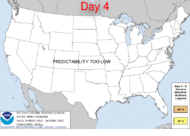 | |
| The Thunderstorm Outlooks depict the probability of thunderstorms across the contiguous United States in 4 or 8 hour time periods. The probabilistic forecast directly expresses the best estimate of a thunderstorm occurring within 12 miles of a point. The three probabilistic forecast thresholds are 10, 40, and 70 percent. | Thunderstorm Outlook |
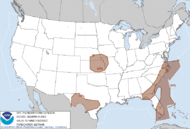 | |
| Fire Weather Outlooks | |
| This is today’s forecast for organized wildfires over the contiguous United States. Please read the description of the risk categories for further information about this product. | Today’s Outlook |
 | |
| This is tomorrow’s forecast for organized wildfires over the contiguous United States. Please read the description of the risk categories for further information about this product. | Tomorrow’s Outlook |
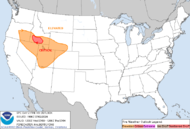 | |
| This is day 3-8 forecast for organized wildfires over the contiguous United States. Please read the description of the risk categories for further information about this product. | Day 3-8 Outlook |
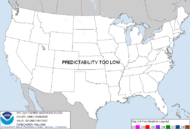 | |



